Senior Personal Care
The right time, right place, right help
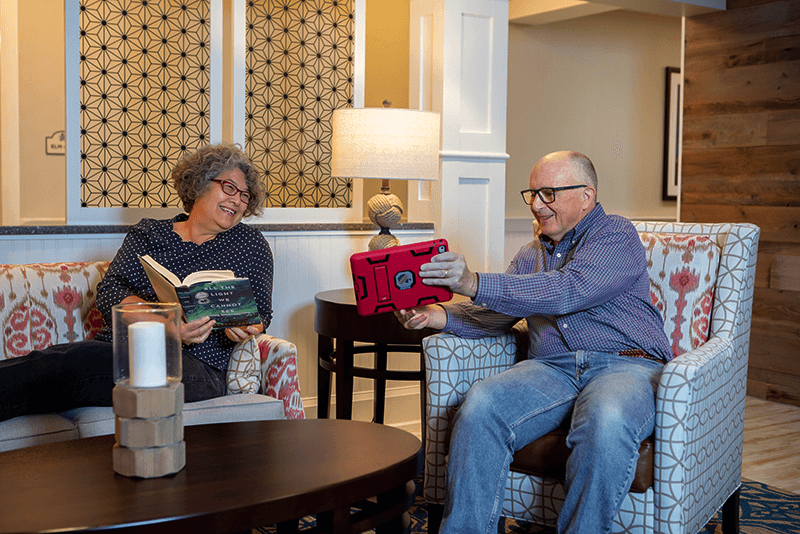
Music from a previous era. Sounds of drums and shakers come from a rec room. A burst of laughter follows. Inside the room, women tap their fingers or play instruments along with the beat, and a man practically dances in his chair. A new music therapy intern at Barclay Friends, part of the recreation department, is giving new meaning to rock and roll. A group of seniors who need assistance with activities of daily living certainly haven’t given up having fun.
Senior communities throughout the Brandywine Valley offer personal care, also referred to as assisted living, to help make aging as easy as possible with as much independence as possible. Regulations define specific levels of senior care, including assisted living, and formal medical evaluations and assessments inform what level you or your loved one may need. But different communities provide that care in slightly different ways and offer different services to suit a variety of needs and tastes.
Experts suggest tips for making a smooth move from independent living in a continuing care community or longtime personal residence to personal care within a senior community.
Signs of Changing Times
“Age in the right place,” said Michele Berardi, senior director of communications and public relations at Kendal-Crosslands Communities. “If you’re struggling at home, that’s not a great way to live. That’s not thriving. When you have the right services, you’ll be able to live better, with less stress.”
Signs of changing needs can be identified by family and friends or staff and good neighbors at an independent community. Sometimes an individual herself realizes she’s overwhelmed.
Families may notice a lack of substantial food in the refrigerator or note nutritious food that isn’t used — milk souring and salad wilting. Adult offspring may find that one parent is always exhausted from taking care of the other.
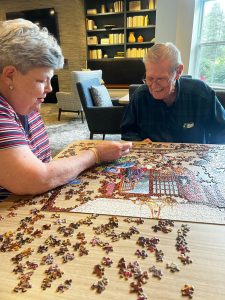
According to Laura Smith, senior director of health services at Barclay Friends, “Seniors may begin to isolate themselves socially, avoiding interactions or group activities — a possible sign of cognitive or emotional decline. Another common indicator is a noticeable drop in personal hygiene or grooming, such as an unkempt appearance, which suggests they struggle to manage daily tasks. Missed meals or a lack of nutrition may signal that preparing food or remembering to eat is becoming difficult. Additionally, managing medications can become a challenge, leading to missed doses, potential health complications or hospitalizations. Increased falls or mobility issues are also warning signs, as frequent falls can point to declining physical ability or unsafe living conditions.”
“It’s not usually one person who wakes up and says ‘We need a change,’” said Donna Taylor, chief health services officer at Kendal-Crosslands Communities. At Kendal, “it’s a process — a series of discussions among family, other residents who look out for each other and staff.”
Getting There Mentally and Physically
Whether a hospitalization, safety or ease of mind sparks a change, a collaborative process — honoring the senior’s choices — goes a long way toward a successful transition to personal care, continued Taylor.
Changes are never easy. Along with logistical matters, emotions can run high. Sadness accompanies letting go of longtime ways of life. Frustration of not being able to care for oneself or for a loved one is hard.
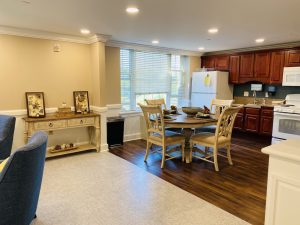
“Guilt is a valid response families have when suggesting a move may be necessary for a loved one,” said Marnie Keenan, admission coordinator at Riddle Village. “The individual’s safety is of the utmost importance. The transition is easier when individuals can be involved in decision making, rather than being subject to a forced move.”
Lindsey Bonaventure, community outreach coordinator at Granite Farms Estates, added that family members may not see the situation from the eyes of their loved one, and the senior may not see it through the eyes of the family. Talking to people who’ve navigated the process before, such as team members and neighbors at the residence, helps allay fears. Granite Farms Estates holds support groups for caregivers and others needing a dose of empathy.
Sometimes a slow progression helps. A family might choose a home-care program for a few hours each day to help a senior remain independent at home, said Taylor. When family members disagree about a course of action, Kendal’s staff works toward reaching consensus. In some cases, a resident relies on a person with authority — whether family member, appointed attorney or longtime friend — to make decisions that are in their best interests.
Getting There Physically
Communities concur: seniors who make early decisions and plans generally have a simpler transition. When a room in personal care opens up in a life plan community, residents already in the independent facilities there have top priority and already know the staff, layout and service options.
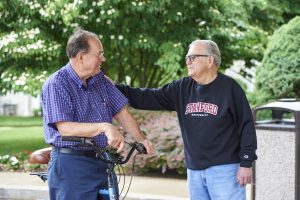
The individual may have already chosen a community for a distinctive homey or resort feel, or special amenities — such as Riddle Village’s comprehensive personal care services that offer a choice of three restaurant-style dining rooms, or Luthercare’s billiard room and putting green. Sometimes the preference is for a convenient campus layout, out, such as Kendal’s health center near the dining room so neighbors can visit at mealtime, or Dunwoody Village’s personal care quarters organized in unique “neighborhoods” around common areas. Others select a floor plan — a room on the ground floor or one with a view … and an elevator, as at Freedom Village at Brandywine.
Whether moving across the campus or across state lines to be nearer family or cherished friends, it can create stress for the senior. But there are ways to minimize the impact. “Have a moving company do the work. Set the floor plan for furniture arrangement in advance. At Kendal, a resident in independent living can leave for the morning, go to lunch and later in the day move back into a personal care room that’s ready with their belongings. Or it can happen in a slower way if that makes the resident more comfortable,” suggested Taylor.
Time for What’s Loved Most
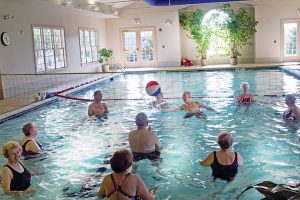
While skydiving may no longer be part of the picture, aspects of many new or longtime activities are still available. The scuba mask might need to be passed down, but Luthercare’s indoor pool is great for soaking in fun. Ware Presbyterian Village’s model railroad runs for those who always loved the sounds of trains, planes and automobiles but are content to do armchair traveling.
Kendal makes individualized plans to help residents do what they love. To visit Longwood Gardens, flower fans can engage home care, enlist a family member to go with them, take endurance training to walk or hop on a scooter. There’s a full disciplinary team to pursue dreams like attending a grand- or great-grandchild’s wedding.
While life still marches on, there are ways to maximize time and energy to live life to the fullest in personal care.
Summing it up, Bonaventure said, “Residents have compared this to a cruise ship that doesn’t set sail.”
More Suggestions for Peace of Mind
Create a plan. A good transition plan includes medical evaluations, family consultations, orientation visits and regular communication between all parties, said Barclay Friends’ Smith.
Move while you’re well. Granite Farms Estates keeps a file of residents’ favorites: movies, activities and more so staff knows what someone likes before communication becomes difficult. A program called Thrive that helps residents maintain coordination, balance and walking up steps makes it easier for community members to climb aboard a bus to take fun trips — taking care of potential issues before they’re actually problems.
Keep seniors’ possessions close. This lessens the stress of a new environment, Riddle Village’s Keenan said. Give the resident choice in what they want to take — furniture, pictures and personal items that are meaningful. Sometimes a resident is relieved to downsize belongings. “I should have done it earlier,” said one who recently moved from a large apartment in a life plan community to a room in assisted living. “What do we need all this stuff for?”
Socialize! Whether it’s family coming from outside the community to visit a parent’s room or the community gang heading to a campus’s garden, visits can be the sunniest part of the day.
There’s an app for that. Try it. Many communities, including White Horse Village, offer various technologies to lend a hand for comfort, security and connection. Alexa or other “smart assistants” can turn down the music’s volume, turn up the heat and turn on the lights. Other technology unobtrusively keeps track of a resident’s location without her feeling like she’s being trailed. Emergency call buttons on pendants provide independence yet comfort that help is in reach.
